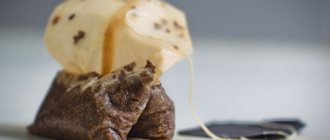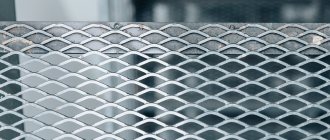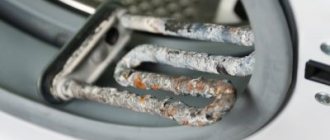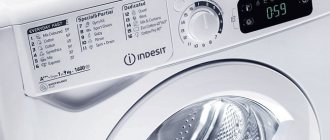One of the conditions for long-term and high-quality operation of the washing machine is maintaining the cleanliness of the household appliance.
With each cycle, the washing machine passes several tens of liters of water with particles of detergents, dirt, hair and other debris, partially deposited on the internal surfaces of the drum, drain pipes and other elements.
An unpleasant odor is a signal that the washer needs cleaning. Recommendations from experienced professionals will help you carry out work to eliminate the problem that has arisen competently, without compromising the further operation of the household appliance.
We will tell you in this article how to remove the smell from an automatic machine at home.
Reasons for the appearance of an unpleasant odor from the washing machine
Most often, the appearance of an unpleasant odor from a washing machine is caused by the following reasons:
Dirty tray .
Over time, the remains of undissolved powder, salts, and hard tap water accumulate on the smooth walls of the powder receptacle. As dirt accumulates on the walls of the tray, it begins to emit an unpleasant odor, which easily gets onto the laundry during the washing process.Regular cleaning of the tray will help solve the problem. To do this, remove the powder receptacle (you must press a special blue button), and then clean it with a toothbrush and laundry soap.
- Drain filter clogged .
Hair, six animals and other small debris that gets stuck in the drain filter after each wash accumulate and begin to emit a very unpleasant odor. Fixing the problem is simple: you need to unscrew the cover covering the drain filter (located at the bottom of the front or side panel), remove the filter, and clean it under running water to remove dirt and debris. The now clean part is mounted in its original place and covered with a lid. - Dirty drain hose . Every time you wash, dirty water with small debris passes through the hose. Dirt, settling on the inner walls of the hose, begins to emit an unpleasant odor. Solution to the problem: the washing machine is started in a “idle” wash (without laundry) at maximum water temperature, after pouring half a glass of baking soda into the powder receptacle.
- Scale on the electric heater . Heating elements attract everything: lint, particles of hair and wool, soap, lime deposits. As all this garbage accumulates, it begins to stink (especially when the heating element is heated). A “idle” wash at a water temperature of 95°C using a bag of citric acid (pour into a powder receptacle) will help you solve the problem yourself.
Also, a common cause of the stench emanating from a washing machine can be an incorrect connection of the drain hose to the sewer system.
It is enough to double-check the connection (the diagram is indicated by the manufacturer in the instructions) and correct the shortcomings in order to forget about the problem of unpleasant odors forever.
How to remove using folk remedies?
There are several popular methods that help quickly, using available means, remove unpleasant odors from the washing machine.
Citric acid
Cleaning with citric acid will help
remove unpleasant odors and detergent deposits .
The steps are simple: pour 3-4 tbsp into the main wash tray. citric acid and the same amount of washing powder.
The washing machine is started in the longest wash mode at high temperatures. The spin option is disabled .
This article will tell you more about cleaning your washing machine from scale with citric acid.
Baking soda
Baking soda powder can not only remove unpleasant odors, but also prevent the appearance of scale, mildew and mold.
Cleaning is carried out in several ways:
- Pour half a glass of soda into the main wash tray and add a few drops of any aroma oil. The washing machine is started idle, at high temperature in the longest wash mode.
- Half a pack of baking soda is poured into the main wash compartment. The washing machine is started in a “idle” wash at a water temperature of 30°C. Afterwards, the washing machine is run again without laundry, at a water temperature of 60°C, with one glass of vinegar added to the main wash compartment.
After using vinegar, the washing machine drum must be left to air for at least three hours.
What exactly can a washing machine smell like?
The most disgusting smell that can come from a machine is the smell of fungal mold. It is so sharply sweet and smells simply disgusting. It's downright heartbreaking. And it’s absolutely impossible to wear something that smells like that.
Also, the machine may smell of acetone, gasoline or other chemicals. But in this case, everything is not so scary, since the culprit is some dirty thing in gasoline that you threw into the washing machine. And such a smell washes out on its own. A couple of washes with some old sheet and that’s it, the problem is solved.
So, there is no point in talking about this; it’s better to discuss how to detect and neutralize the moldy smell. This is really a problem that can lead to not only unnecessary expenses, but also endless fuss.
How to eliminate with special compounds?
If cleaning with improvised means does not lead to the desired result, special household chemicals will help . TOP 5 most effective professional compositions:
Tiret gel
The detergent for washing machines will clean from:
- unpleasant odors,
- soap scum,
- minor blockages.
Safe for metal and plastic surfaces. The gel is effective even if there is water in the washing machine drum. The average cost is 380 rubles. (500 ml bottle).
Doctor TEN antibacterial
Professional product for removing scale and unpleasant odors in automatic washing machines. With regular use, it stops the development of mold and mildew (the main sources of unpleasant odors in the washing machine).
Doctor TEN Treatment:
- disinfects surfaces,
- removes scale, thereby extending the life of the household appliance.
The average cost is 115 rubles. (pack of 200 g).
Chistolan Automatic
Washing machine care product. Provides reliable protection against scale, prevents the appearance of mold and unpleasant odors. Chistolan can be used in any washing mode, both with dry powders and liquid detergents. The average cost is 50 rubles. (pack of 500 g).
Refine
Protection for washing machines. Regular use of the product:
- prevents the formation of lime deposits,
- softens water
- disinfects the internal surfaces of the washing machine.
The average cost is 55 rubles. (pack 750 g).
Cleaner Dr. Beckmann with activated carbon
Qualitatively cleans household appliances from the inside from:
- mud,
- lime deposits,
- unpleasant odors.
Activated carbon formula releases stubborn dirt and soap deposits from even hard-to-reach areas. The product is safe for rubber seals. Average cost 330 rub. (capacity 250 ml).
Cleaning with professional products is carried out in strict accordance with the manufacturer’s instructions, at the highest possible water temperature and double rinse mode.
Stages of cleaning activities
Let's try to disassemble the machine and check all accessible parts of the mechanism for the presence of various unpleasant microorganisms on them.
Stage #1 - disassemble the washing machine
To do this, you need to disconnect it from the power supply, water supply and drainage, and provide access to the equipment from all sides.
After disconnecting the washing machine from power, wait 15-20 minutes for all appliances to turn off. It is advisable to move the machine and check the space under it: dirt on the floor or stand can also be a source of an unpleasant odor.
Let's prepare the necessary tools:
- round nose pliers, pliers or pliers;
- Phillips and slotted screwdriver;
- hammer;
- keys - open-end, heads;
- marker;
- an old toothbrush;
- brush (preferably Kevlar);
- flashlight.
First, remove the top, bottom and side covers of the washer. Look at the design: unscrew the panels secured with self-tapping screws, and pull the rest towards you.
The control unit, wires, drum, engine do not need to be touched. If there is dirt on them, carefully remove them. Look inside the machine, shine a flashlight through every detail, remove debris and dust where possible.
More details about how to disassemble a washing machine are written in this material.
Study the main components of the washing machine before disassembling, look at the instructions: it describes the design features of your particular model
Take pictures or film your actions, this will make it easier to put the parts in place later. Now let's look at the individual elements where colonies of microorganisms prefer to live.
Stage #2 - clean or change the cuff
The rubber seal is constantly in contact with moisture and is not able to self-clean due to its shape. Stagnation of liquid in it leads to the formation of rot.
Black spots can be removed with any chlorine-containing solution diluted with water - regular “Belizna” or “Domestos”, “Toilet duck”.
The algorithm of actions is as follows:
- Wear rubber gloves.
- Wash the cuff of the loading hatch with a chlorine-containing solution.
- Close the machine.
- After 30-40 minutes. you need to turn on the rinse mode. But our machine is disassembled and turned off, we’ll do it later.
If it is impossible to wash the cuff or it has become unusable, it can be removed and replaced with a new one. The rubber seal is attached to the tank body with two clamps.
First you need to bend the front edge and remove the first plastic clamp from the latch. If the clamp is metal, it is moved away with a screwdriver.
There is a spring on the metal clamp, you need to pull it towards you and loosen it, unscrew the screw (if there is one), then the ring can be easily removed
Next, carefully pull out the first part of the cuff and make a mark with a marker so that you can easily insert a new elastic band later. It will then need to be combined with the mark on the tank itself.
We similarly release the other part of the cuff from the second clamp and tuck the elastic band inside the drum.
To completely remove the cuff, you need to unscrew the bolts from the back, remove the housing cover, pull out the powder container, unscrew the bolts underneath, release the latches of the control panel, remove it, remove the bottom panel, unscrew the facade and provide access to the sealing rubber
Try washing the removed rubber seal, maybe it will still serve. If nothing can save her, take the old cuff and buy a new one of the same size.
Before installing a new cuff, you need to wash the edge of the tank with warm soapy water. Do not wash the soap film, it will serve as a lubricant. To put the elastic in place, place the top of the elastic against the edge of the tank along the marks and use your thumbs to tighten the elastic.
The triangular marks on the drum and the cuff of the loading hatch must match: if the sealing rubber moves even a couple of millimeters, there will be leaks
Slide from the center around the circle. When the cuff is in place, check the fit and secure it with clamps.
Stage #3 - clean the detergent loading compartment
Removing the part is quite simple with a top-loading machine - unscrew the plastic screws and remove the tray. In some horizontal-loading washing machines, it is more difficult to pull out. Do not rush to tug and tear out the container.
Look in the instructions for the machine - there are models where it can be removed with one click on the tab near the rinse aid compartment. If the container comes out like a fan, you need to open it all the way, then lift it, pull it towards you and pull it out.
Consider the detergent tray, there probably is a special valve there - modern manufacturers make this design simple and easily removable
How to remove the straight horizontal detergent tray:
- Pull it all the way.
- Examine the bottom of the container.
- If cloves are visible on both sides deep down, grease them with any vegetable oil.
- Lift the container up and pull it towards you, it will move 1-2 millimeters.
- Press the top of the tray until it clicks and pull, it should come out freely.
After removal, the tray must be cleaned of plaque and mold. Use suitable household chemicals for this. You can fill the tray with soda, vinegar, or vinegar-soda hot solution.
Exposure time - 6-8 hours. After this, the dirt will fall away and be easily removed. Citric acid will also work. Wipe the clean tray dry and place it back in the washing machine compartment.
Stage #4 - cleaning the drainage system
The system can be cleaned without disassembling using special products that remove deposits. Powders, solutions, tablets are used according to the instructions on the package.
Regular soda will also work. 150 g of powder should be poured into the drum and rotated without laundry on the longest setting. But our machine has been disassembled, so we’ll clean everything completely.
To get to the drainage system:
- Cover the floor with a soft cloth and turn the washer on its side.
- Place plenty of rags under the drainage system to prevent any remaining water from damaging the flooring.
- Using a flathead screwdriver, remove the bottom panel.
- Unscrew the bolts that hold the filter.
- Remove the filter.
- Use pliers to loosen the clamp and separate the hose from the pump and housing.
The hose in top-loading machines is located on the side. To remove it, we release the fasteners, remove the panel, unscrew the clamp, and pull out the hose.
When it is already in your hands, we begin to clean it, inserting a brush from one side or the other. We rinse the hose under running hot water and return it to its place.
If the drain hose has become unusable, it is easy to replace it: measure the required length, buy a part (it is better to take a regular one, not a telescopic one) and put it in place of the old one
Now let's move on to the filter . We clean it of all contaminants and rinse it with water. If there is plaque, soak the filter in a citric acid solution for several hours, after which we remove the deposits.
We highlight the place where the filter is installed with a flashlight and also clean it of debris. We return the part to its place.
Don't forget about the filter for a long time. It is easily accessible from the outside of the machine by simply turning the plug itself counterclockwise.
If the filter is secured with a bolt, it is easy to unscrew it without disassembling the machine. The part needs to be cleaned every 2-3 months or six months, depending on the frequency of washing.
An overview of the best ways to clean the filter in washing machines can be read here.
Another participant in the drainage system is the pump . Disconnect the wires leading to it and unscrew the device. The most problematic part is the impeller. It is easy to get out by unscrewing the screws that connect the body.
As the washer operates, the impeller rotates, so it wraps around debris. We remove dirt from it, wipe the inside of the pump, clean the hoses and put everything back together.
Stage #5 - clean the water supply channel
Removing the fill tube will reveal the inlet filter. We carefully remove this fine mesh with pliers. Remove it with extreme care; it is very fragile. Happened? Now clean the filter with a toothbrush and rinse with water.
Manufacturers recommend cleaning filters every six months and not forgetting about the nest - a flashlight will help to carefully inspect all areas
Clean and rinse the filler tube. Often debris collects on its walls and a silty coating appears. Clean with a brush and rinse with hot running water. We connect all the parts together and install them back.
Stage #6 - clean or change the heating element
Scale on the coil (TENE) is another source of bad odor. This is not quite a traditional coating, like on the walls of a teapot. It is formed not so much from the quality of the water as from debris and detergent residues.
If you rarely use the machine and turn it on at minimum temperature, the plaque begins to rot, emitting a characteristic “aroma” in the process. But high washing temperatures do not help - a burning smell appears.
There are two ways to remove scale: physical and chemical. Physical involves removing plaque manually with hard objects.
It is not recommended to do this yourself; there is a risk of damaging the spiral. Let's make do with a chemical one, use a solution of citric acid. But more on that later.
Let's see what condition the heating element is in. Remember, at the very beginning, when washing at maximum temperature, you had to check whether the water was warm enough? Maybe the machine washes without heating and this is the reason for the unpleasant smell?
Then you need to replace the heating element. In most models it is located at the back, so it is not difficult to find.
How to understand that the heating element requires replacement: visually there is a lot of scale on it, which citric acid can no longer cope with, plus you can measure the resistance with a multimeter - the working device will show 24 Ohms
Let us consider in detail the process of replacing the heating element:
- Remove the wires from the heating element.
- We turn the fixing nut in the middle of the heating element (let it remain on the edge of the thread, do not remove it).
- We press the nut inward, you can tap it with a hammer.
- We take out the heating element. If it doesn’t work, pry it off with a slotted screwdriver or a knife.
- We put the old part aside and install the new one, repeating the algorithm in reverse order.
If you still don’t need to replace the heating element, the amount of scale is not critical, return all the parts to their place, close the machine, tighten all the bolts, connect it to water and electricity.
Pour 150-200 g of citric acid into the powder container, set the longest mode at maximum temperature and run the washing machine without laundry.
If you have cleaned all the places where microorganisms could develop their vital activity, replaced parts that have become unusable, but the unpleasant odor remains, the problem is hidden in the general building communications.
This is evidenced by the smell of rot from the shells. Contact your service company. It’s good if the unpleasant smell has disappeared, but how to prevent such a situation in the future?
Call a plumber
Calling a professional technician will help you quickly solve the problem of unpleasant odor from your washing machine.
The plumber will conduct qualified diagnostics and eliminate the problem without any consequences for the further operation of the household appliance.
Removing an unpleasant odor from a washing machine requires a whole range of measures:
- Cleaning and disinfection of the rubber cuff.
- Cleaning the drain pump filters.
- Removing scale from the heating element (if necessary, replace the heating element with a new one).
- Cleaning the powder receptacle, drum, hatch doors of the washing machine.
On average, a set of measures to clean a washing machine will cost 3,000 rubles. It is important to understand that the cost of work may vary. For example, during the cleaning process, the technician diagnoses a breakdown or a worn-out element of a household appliance will need to be replaced.
You can order a plumber's service for cleaning your washing machine on specialized websites for repairing household appliances or by contacting service centers operating near your place of residence.
Is there one universal way to get rid of odor?
Many people think that it is not at all necessary to look for something there and clean it, you can just take and run the machine using some kind of chemical. After all, in theory, it should get into all the places and crevices and automatically wash out the suspected areas where fungus accumulates.
In principle, this is the right decision and you should always start with it. But, keep in mind that washing must be done not just once, but a couple of times in a row.
Why is that? But because an acid or other chemical substance may not completely break down the plaque the first time, but only “fluff” it, which will only intensify the stench. Therefore, rinse twice and if this does not help, then you will have to look for the root of the evil...
Prevention
Avoiding the problem of unpleasant smells from your washing machine is easy. It is enough to follow simple rules:
do not store dirty laundry in the washing machine drum - special baskets with perforations have been invented for such purposes;- keep the hatch door always open (humidity is the main provocateur of an unpleasant odor);
- Wipe the rubber cuff and powder receptacle with a dry cloth after each wash;
- use only high-quality laundry detergents - low-grade powders and liquid detergents leave a residue on the inner surface of the drum and washing machine drain hoses, which very quickly leads to the appearance of unpleasant odors.
Regular (once every six months) preventive cleaning of your washing machine will help you forget about unpleasant odors forever and will extend the life of your household appliance.
Adviсe
A few tips from experienced craftsmen will speed up the process of removing unpleasant odors from the washing machine:
- A clogged drain corrugated hose that could not be cleaned the first time requires replacement.
- A baking soda paste (the powder is diluted with water into a thick paste) will help to quickly clean the rubber cuff from black deposits and unpleasant odors.
- An effective remedy in the fight against unpleasant odors of mold and mildew is copper sulfate. For cleaning, use a solution prepared at the rate of 1.5 tbsp. copper sulfate per liter of clean water. Wipe the cuffs with a rag soaked in the prepared mixture. Additionally, a solution of copper sulfate is poured into the drum, after which the wash is started at a water temperature of 95°C.
When cleaning the washing machine, do not forget about personal protective equipment - rubber gloves and a respirator.
You will find a lot of useful and important information about removing various unpleasant odors from objects and surfaces in this section.










